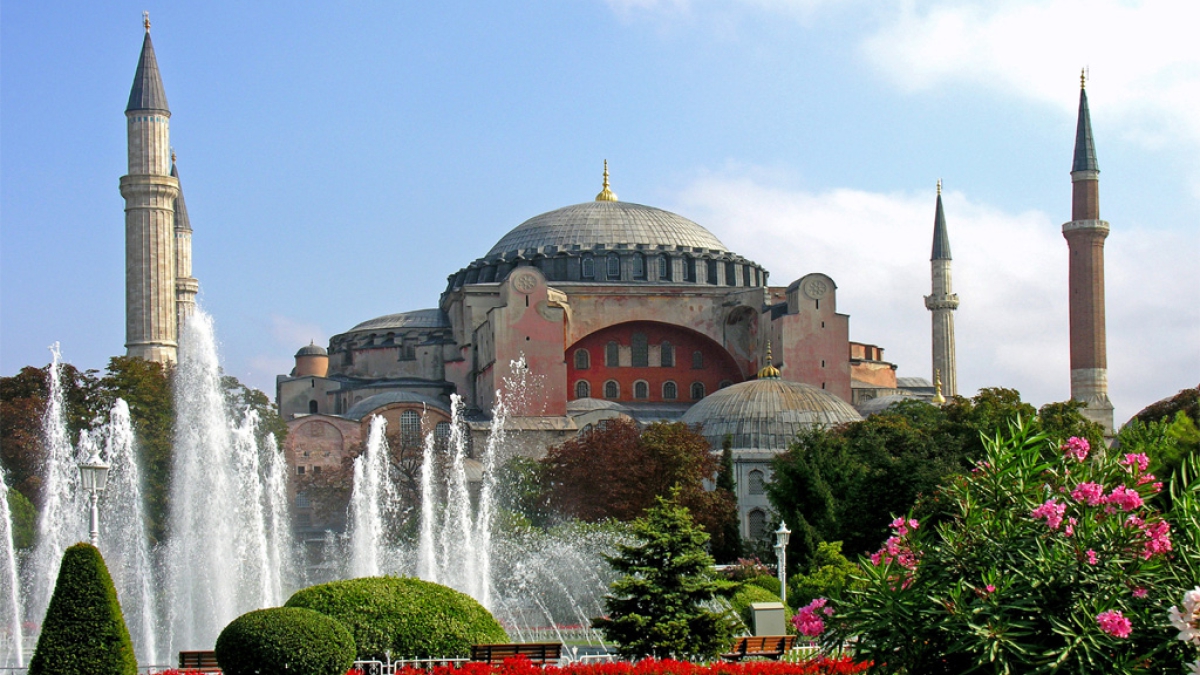Hagia Sofia

Thanks to its location at the gateway between Europe and Asia Istanbul is one of the oldest and largest continuously populated cities in the world. While it has only been known as Istanbul for less than a century the city, under various names goes back to the first millennium BCE when it was known as Chalcedon while there are signs of settlement in the area going back several millennia before that.
For centuries the Istanbul was known as Constantinople after Constantine The Great, the Roman Emperor who adopted Christianity as the Empire's official religion. Constantine died in 337 and shortly afterward, in 360, the church Hagia Sophia (meaning Holy Wisdom) was inaugurated by Constantinius II. The church still stands (although not in its original form) however, it is the oldest Christian building in the world despite its having been converted into a mosque in 1453 and then unconsecrated so it could be used as a museum in 1943.
Despite originally being built as a Christian church and being the largest cathedral in the world until the completion of Seville cathedral in 1520 the Hagia Sophia served as the blueprint for some of the most famous and beautiful Ottoman mosques ever built including the Blue Mosque of Istanbul.
Because of its age and past as both a Christian and Muslim holy site the Hagia Sophia attracts visitors from all over Europe, Asia and beyond. Once it was converted into a museum the carpets which had covered the floors for centuries and the plaster which had covered the mosaics on the walls could be removed, revealing beautiful marble and intricate tile work which had been concealed for generation upon generation. The museum itself celebrates the diversity and toleration of others that is such a key part of Turkey's tradition. This beautiful ideal is reflected not only in the beauty of the building itself but in the grounds where it stands. Not many people realize but Istanbul actually has more rainfall per year than London or Paris, however, in such a hot climate the rain is far more welcomed!
All that moisture means that the Hagia Sophia's gardens are a lush green with fabulous water features all around. As well as several areas dedicated to the previous churches and temples that were built on the site before the current building was established. Accommodation around these areas can be found here, unless you are fortunate enough to be staying with friends and family.
As well as being an obvious site for people interested in religion and culture to visit, the Hagia Sophia is also of great interest to engineers and architects. After the original and hastily constructed dome of the church fell in after an earthquake in 558 a new one had to be put up. This one, the one that still seems to float over the building today thanks to 40 windows that stand at the bottom of the dome is of significant interest to engineers and architects as it is the first dome to be completed using penditive support, that is, instead of using numerous columns to support a roof, instead triangular sections of a theoretical sphere take the weight of the dome down to the foundations, which increases the open space within the building, again, adding to the impression that the dome is indeed floating rather than being held up.
Topics: Christianity, Istanbul, Roman Emperor, Turkiye
Views: 10970
Related Suggestions

















